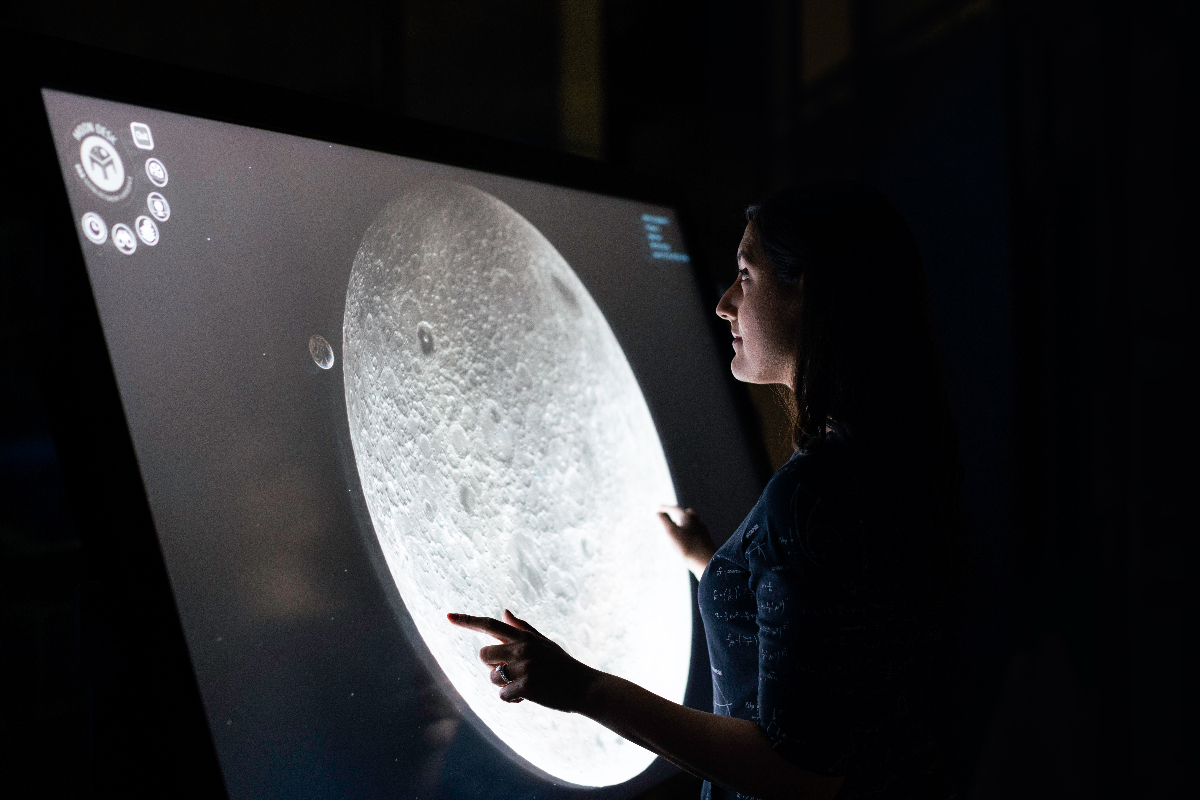It wasn’t so long ago that augmented reality was a science fiction fantasy. While its (very) early iterations date back to the 1950s, AR, as we define it today, didn’t come into play until the 1990s, with Boeing’s Thomas P Caudell coining the term in 1990. From there, AR ToolKit was released with Adobe in 2009, Google Glass was announced in 2013, and Pokemon Go made “augmented reality” a household name in 2016.
But the rest isn’t, as they say, history; it’s the future.
AR offers benefits to every industry and walk of life. Here are 15 compelling benefits of AR and why it’s time to embrace this technology.
What is Augmented Reality (AR)?
AR is a type of technology that falls under the umbrella of extended reality (XR), which includes AR, virtual reality (VR), and mixed reality (MR). In layman’s terms, AR is the projection of 3D images or animations superimposed over the real world when viewed through an AR-capable device— your mobile device or smart glasses, for example.
AR allows you to experience an enhanced reality in real life, elevating the world around you. It’s used in everything from games to construction to surgical training.
AR vs. VR: What’s the Difference?
One of the most common misunderstandings among consumers is the difference between AR and VR. While both are immersive technologies, the virtual reality experience takes you out of the real world into a simulated program. Rather than seeing the physical objects around you, you’re completely immersed in the VR experience. VR is meant to blur the lines of reality, whereas AR is meant to make your reality more engaging.
The Top Benefits of Augmented Reality
There are many benefits to using AR, both from an industry and consumer perspective. In fact, there are so many benefits spanning various industries that it’s impossible to summarize them in a one-size-fits-all approach. Here are the primary benefits of augmented reality that are reshaping our world.
Improves User Engagement
Refining customer experiences in a post-pandemic world is a top priority for many businesses. Anecdotal evidence shows that augmented reality technology can boost user engagement— a notable benefit for brands, education providers, and more.
Audi is well-known for being an innovative luxury car brand. To elevate their customer experience, the team at Audi partnered with ZeroLight to create a 3D model experience for customers. The 3D model can be configured to the customer’s liking, allowing them to personalize their car and see minute details without stepping into a store.
Compared to the 2D models, Audi reported a 66% increase in customer engagement with the 3D experience. This is just one example of the practical applications brands can bring to life with AR.
Boosts Conversion Rates
Improving engagement is important, but money talks. Conversion rates translate to money spent, highlighting the tangible benefits of AR efforts. It’s even powerful enough to bring direct mail campaigns back to life (wait… maybe this one isn’t a benefit).
United Mail has been a purveyor of those annoying direct marketing campaigns that show up in your mailbox since 1980. While the core goals and values of the company remain the same, they, like many other businesses, have had to adapt to avoid distinction in the digital age.
Enter augmented reality greeting cards.
United Mail sent 90 AR greeting cards during the holiday season in 2016. Each card had a custom link that allowed recipients to pick a gift— but they had to download the AR app to access it. By the following month, the app had a 23% download rate. Five months later, iOS downloads reached 105%, and Android reached 915%.
How? People were so excited that they passed their cards along to others to explore.
The success of United Mail isn’t an anomaly. Studio SAP partnered with Engine Creative through its Reydar app to bring a direct mail campaign to life. The campaign had an uptake rate of 81.91%.
These surprising statistics also apply to retail and eCommerce. 94% of respondents to Deloitte’s 2021 Snap Consumer AR report said that AR would make them more likely to purchase a product. When it comes to boosting conversion rates with AR, everything is Gucci. Literally. They’re doing it too.
Technologically Accessible
Burgeoning technology is notoriously inaccessible to the masses. The original home microwave cost around $500— which is equal to about $3,500 today. Compared to modern microwaves, which are around $150-200, which is equal to, you guessed it, $150-200 today. VCRs, DVD players, projector screens, radios, laptops— technology is expensive when it’s new.
While smart glasses are costly, they’re not necessary for AR experiences. All you need is a smartphone, which 97% of Americans own.
This accessibility means that people from all socioeconomic backgrounds can access these immersive experiences with a handheld device. Think beyond fun apps and games; this could revolutionize education and healthcare. Accessing these interactive experiences with a minimal financial investment could be transformative for those from underprivileged backgrounds.
Protects Consumer Safety
Digital experiences have become the norm during the pandemic. During the pandemic’s peak, digital content consumption skyrocketed by 30%. The routines of everyday life were interrupted, physical worlds were inaccessible, and the need for escapism was high.
Not only did AR save many businesses throughout the pandemic, but it continues to protect customer safety today. Customers have the opportunity to try before they buy, getting a feel for their clothing, makeup, or furniture without having to step foot into a store.
AR also dramatically reduces return rates for eCommerce purchases, further protecting customer safety. Macy’s used VR for its digital experiences and reduced its return rate to under 2%, down from a 5-7% average. Shopify also reported a 40% reduction in platform returns when 3D visualization and AR were utilized.
Improves Visual Presentations
Powerpoints, which the cool kids call “decks” now, is another creative tool that’s fallen out of fashion. However, creating engaging visual presentations is still a top priority when communicating with key stakeholders in a business. AR communications are the future of business presentations in business, construction, architecture, and various industries.
According to Harvard, 80-90% of information gathering happens visually. Creating an “additional reality” with AR can help better communicate business models and information that makes it easier to digest and retain. This will diminish the cognitive load required to process information and help improve stakeholder buy-in during presentations. Reaching out to someone for future business investments? Consider incorporating extended reality into your presentation.
Enhances Project Planning
The visual aspect of project planning is also an overarching benefit of AR. 3-D models are a typical part of the product development process. Now, these 3-D prototypes can be superimposed in real-time to bring the product to life. This feature would create tangible objects viewers can hold with digital objects they can process to get a better idea of how everything will come together.
This aspect of AR is also fantastic for large-scale design and manufacturing. The Harvard Business Review highlights an example in which a manufacturing team creates a lifesize 3-D model of a piece of heavy machinery, allowing the project team to look at everything from the gear shift to the fuel tank. However, creating an actual lifesize, detailed prototype would take significantly more time and money.
Protects Worker Safety
Construction sites can be dangerous. Enhancing construction processes with AR can help minimize the risk to workers by creating a safe space to review real-time project information and engage in safety training.
Researchers are also using AR to identify radiation risks around nuclear reactors to prevent a disaster before it occurs. As many manufacturing and construction businesses are using AR for training purposes, workers can use a handheld device or smart glasses to superimpose instructions, guidelines, or hazard alerts over their workspace.
Creates Consistency with Remote Teams
Remote work was already on the rise before the pandemic; now, it’s a part of everyday life. While digital experiences are sufficient for operating a business, there are still gaps compared to in-person exchanges.
Creating 3-D models and presentations that viewers can access remotely will create consistency in team collaboration. As AR is so accessible, even amateur users can benefit from time spent in these digital environments. Having AR presentations that allow each team member to manipulate the visual data will ensure no one is waiting for a screen share or camera to be held a certain way. This approach to collaboration is more hands-on, immersive, and engaging.
Improves Accessibility for the Visually Impaired
The University of California’s School of Information is conducting research on AR as a critical tool to help people with visual impairments navigate our world. The goal is to help people navigate to their desired destination while detecting obstacles and reading text. This amazing project could improve the safety and independence of those with visual impairments beyond what a cane or guide dog can provide— namely, semantic information and data feedback.
Improves Language Accessibility
Did you know that 67.3 million Americans speak another language at home? As the world reopens and tourism starts to pick up again, overcoming language barriers is a top priority. Using an AR mobile application, people can translate signs and information in real-time, making it easier to navigate foreign places.
With benefits like these, it’s no wonder that AR is becoming prevalent in tourism. Many hospitality and tourism businesses are incorporating AR to improve customer experiences, such as bringing artwork to life in museums or using a location-based augmented reality functionality to provide tours of local attractions.
Improves Medical Accuracy and Diagnostics
AR is making waves in the healthcare sector. It’s expected that future healthcare professionals will use AR tools as a trusted part of their practice. In addition to training applications and learning processes for future healthcare professionals, AR is also being utilized in diagnostics to improve accuracy.
One of the common applications for AR in a hospital environment is for blood draws and IV insertions. An AR mapping tool creates a visual overlay of the patient’s veins to improve success in hitting a vein. According to Harvard, AR reduces needle stick escalations (calling for assistance) by 45%.
Improves Patient Experience
In addition to not getting stuck by multiple needles for a simple blood draw, AR improves the patient experience in other ways. Extended reality is being used in the hospital environment to help minimize anxiety before procedures, especially among children. These tools give patients access to entertainment applications to help provide distraction and calmness before a procedure.
Improves Supply Chain Management
Supply chain disruptions have been predominant over the past few years, with no end in sight. One of the key benefits of AR in the modern world is how it improves supply chain management. Logistics company DHL is a pioneer in using AR to improve inventory and supply chain management. DHL implemented AR to guide in order picking and tracking, as well as route optimization. This shift improved productivity and accuracy by 25% while boosting customer engagement.
Improves Process Efficiency
Accuracy plus speed equals efficiency. Companies incorporating AR into processes have reported better production efficiency and fewer time-consuming defects and errors. Intel implemented AR into its business working processes, reducing picking time by 29%, employee speed by 15%, and error rates to less than 1%.
Lowers Company Operating Costs
The upfront costs of creating an AR strategy and investing in development can be costly. However, the ROI is significant. Minimizing processing time, errors, and delays all improve operating costs. Additionally, minimizing employee risk also translates into money saved. Pair that with the higher engagement and conversion rates in augmented reality marketing campaigns, and you’ve got a winning strategy.
Provides a Competitive Advantage
Finally, incorporating AR helps you exceed customer expectations and get a competitive advantage over your competition. Whether the focus is on business working process improvements, augmented reality for business marketing, or creating quality content to optimize future business investments, everything you’re doing that the competition isn’t sets you apart.
The question in our fast-paced digital world isn’t whether you can afford to invest in AR; it’s if you can afford not to. Spoiler alert: you can’t.
What are the Risks of Augmented Reality?
While the pros far surpass the cons, there are disadvantages to AR and VR. The most notable is cybersecurity. Like any burgeoning technology, the developments typically outpace cybersecurity developments. While you may not worry about hackers knowing that you wear your smart glasses to the store, the military also uses this technology in sensitive missions. Furthermore, data privacy is a real issue that legislatures are sorting through each day.
There are also the overarching concerns that we’ll get too distracted by the digital world or become dependent on technology to tell us how to accomplish simple tasks. This consideration also poses a safety concern: should we be wearing smart glasses while driving? Are we at risk of information overload?
Filters and social media are also a concern. Are we furthering unrealistic beauty standards? Is anything real anymore?
Risks are an inherent part of evolution. Our take: if we’re always afraid to try something new, we’ll never develop or grow.
How Augmented Reality has Changed the World
Augmented reality is changing how we interact with our real-world environment and each other. It impacts how we communicate, share information, and learn. It’s also saving lives and protecting consumers and workers. The benefits of AR cannot be understated.
In summation, augmented reality is the future. Are you ready for it?


